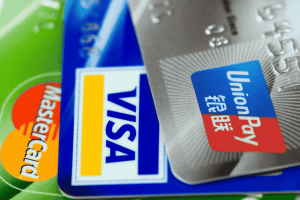Have you noticed how your smartphone has become the center of your financial universe? From paying bills to transferring money to friends, the way you manage your finances has dramatically changed in recent years. At the forefront of this transformation are neobanks – digital-first financial institutions that are challenging traditional banking models across Southeast Asia and beyond.
Unlike the brick-and-mortar banks your parents relied on, neobanks operate without physical branches, offering their services entirely through mobile apps and online platforms. This revolutionary approach is reshaping how millions of people across Thailand, Indonesia, Malaysia, Singapore, and the Philippines interact with their money.
But are these digital upstarts truly the future of personal finance, or just another tech trend that will eventually fade? Let’s explore how neobanks are transforming the financial landscape in Southeast Asia and what this means for your wallet.
What Exactly Are Neobanks?

Neobanks (also called digital banks or challenger banks) are financial technology companies that offer banking services exclusively through digital channels. Unlike traditional banks with their imposing buildings and long queues, neobanks exist primarily in the digital realm – on your smartphone, tablet, or computer.
Key Characteristics of Neobanks:
Neobanks are transforming the banking landscape by offering fully digital services without the need for physical branches. Their key features include:
- 100% digital operations: All services are managed online or via mobile apps, eliminating the need for traditional brick-and-mortar branches.
- User-friendly mobile apps: Designed with intuitive interfaces, these apps make banking easy and accessible for users of all ages.
- Lower fees: With reduced overhead costs, neobanks can offer lower fees and better rates compared to traditional banks.
- Faster service: Opening an account, transferring funds, or getting customer support happens quickly — often in minutes rather than days.
- Innovative features: Tools like spending analytics, budgeting assistance, and automated savings help customers manage their finances more effectively.
- Targeted products: Many neobanks tailor their offerings to specific customer groups, such as freelancers, students, or small businesses, providing personalized solutions.
The neobank movement started in Europe and North America but has rapidly expanded across Southeast Asia. The region’s young, tech-savvy population combined with growing smartphone adoption creates ideal conditions for digital banking to thrive.
The Neobank Landscape in Southeast Asia
Southeast Asia has become a hotbed for neobank activity, with numerous players entering the market in recent years. The region’s unique characteristics make it particularly fertile ground for digital banking innovation:
Regional Neobank Leaders:
| Country | Notable Neobanks | Key Features |
| Singapore | Trust Bank, GXS Bank | Advanced wealth management, multi-currency accounts |
| Indonesia | Jago, Blu | Islamic banking options, microloans for small businesses |
| Philippines | GoTyme, Maya Bank | Remittance-focused services, integration with e-commerce |
| Malaysia | BigPay, AEON Bank | Travel-oriented features, retail partnerships |
| Thailand | SCB Easy, K PLUS | Advanced bill payments, government service integration |
| Vietnam | Timo, Cake | Simplified savings products, youth-focused services |
Why Southeast Asia is Embracing Neobanks
The region presents unique opportunities for neobank growth:
- 1. High smartphone penetration – Over 90% of internet users in Southeast Asia access the web primarily through mobile devices
- Large unbanked population – Approximately 290 million adults in the region lack access to traditional banking services
- Young, tech-savvy demographic – The median age in Southeast Asia is under 30 years
- Regulatory support – Many countries have introduced digital banking frameworks to encourage innovation
- Increasing digital literacy – Growing comfort with digital financial services across all age groups
How Neobanks Are Changing Your Financial Experience
The rise of neobanks isn’t just about technology – it’s about fundamentally changing your relationship with money. Here’s how these digital disruptors are transforming personal finance:
1. Eliminating Friction Points
Remember the last time you visited a traditional bank? The travel time, waiting in line, filling out paperwork – all these friction points disappear with neobanks. Opening an account often takes minutes rather than days, and most services are available 24/7 at your fingertips.
Real-world impact: In countries like the Philippines, where traffic congestion can make a bank visit a half-day affair, neobanks allow you to manage your finances without leaving your home or workplace.
2. Reducing Costs
Without expensive branch networks to maintain, neobanks typically offer services with lower fees – or sometimes no fees at all. This cost advantage is particularly significant in Southeast Asia, where banking fees can represent a substantial burden for middle-income households.
Cost comparison example:
- Traditional bank: Monthly maintenance fees, ATM withdrawal fees, minimum balance requirements, foreign transaction fees
- Typical neobank: No monthly fees, limited free ATM withdrawals, no minimum balance, reduced foreign transaction fees
3. Providing Personalized Financial Insights
Neobanks excel at turning your financial data into actionable insights. Their apps can categorize your spending, identify saving opportunities, and even predict future expenses based on your habits.
Practical application: Imagine receiving a notification that your dining expenses have increased by 30% this month, along with suggestions for affordable restaurant alternatives in your neighborhood. This level of personalization is becoming standard with neobanks.
4. Simplifying International Transactions
For Southeast Asian consumers who frequently send money to family members abroad or shop on international websites, neobanks offer significant advantages with multi-currency accounts and competitive exchange rates.
Did you know? Remittances represent over 10% of GDP in countries like the Philippines. Neobanks can reduce the cost of these transfers by up to 70% compared to traditional remittance services.
5. Encouraging Saving and Investment

Many neobanks have developed innovative features to help you save more effectively:
- Automated round-up savings – Rounding up purchases to the nearest dollar and saving the difference
- Goal-based saving pots – Creating virtual envelopes for specific savings goals
- Micro-investing options – Starting an investment portfolio with very small amounts
- Spending challenges – Gamified approaches to reducing expenses in certain categories
The Advantages of Neobanks for Southeast Asian Consumers
For the average middle-income consumer in Southeast Asia, neobanks offer several compelling advantages:
Accessibility
Traditional banking penetration remains limited in many parts of Southeast Asia, particularly outside major urban centers. Neobanks can reach anyone with a smartphone and internet connection, bringing financial services to previously underserved populations.
Convenience
With work schedules becoming increasingly demanding across the region, the ability to handle banking tasks anytime and anywhere represents a significant quality-of-life improvement for many consumers.
Financial Inclusion
Neobanks often have lower barriers to entry than traditional banks. Many don’t require minimum deposits or regular income proof, making them accessible to freelancers, gig workers, and those with irregular income streams – a growing segment in Southeast Asian economies.
Innovation Speed
Neobanks can deploy new features and services much faster than traditional banks. This means you benefit from cutting-edge financial technology without waiting for legacy institutions to catch up.
Challenges and Limitations: The Other Side of the Coin
Despite their advantages, neobanks face significant challenges that could limit their growth and impact:
Trust and Security Concerns
Many consumers, particularly older generations, remain skeptical about entrusting their money to institutions without physical branches. Building trust takes time, especially in cultures where face-to-face relationships have traditionally been important in financial dealings.
Regulatory Hurdles
The regulatory environment for digital banking varies significantly across Southeast Asia. Some countries have embraced neobanks with special licensing frameworks, while others maintain restrictions that limit their operations.
Limited Service Offerings
Most neobanks still can’t match the full range of services offered by established banks, particularly for complex needs like mortgages, business loans, or sophisticated investment products.
Connectivity Issues
While urban areas in Southeast Asia enjoy excellent internet connectivity, rural regions often struggle with reliable access. This digital divide could prevent neobanks from reaching all potential customers.
Cash Dependency
Despite digital payment growth, cash remains king in many parts of Southeast Asia. Neobanks must find cost-effective ways to provide cash access through ATM networks or partnerships.
The Competitive Response: Traditional Banks Fight Back
Traditional banks aren’t standing still as neobanks gain ground. Across Southeast Asia, established financial institutions are responding with their own digital initiatives:
- Digital transformation programs – Upgrading legacy systems and processes
- Launching digital-only subsidiaries – Creating their own neobank brands
- Enhanced mobile apps – Improving user experience and adding features
- Strategic partnerships with fintech companies
- Branch transformation – Reimagining physical locations as advisory centers rather than transaction processing facilities
This competitive response benefits you as a consumer, as it accelerates innovation across the entire banking sector.
The Future: Coexistence or Disruption?
As we look ahead, several scenarios could unfold in the relationship between neobanks and traditional financial institutions:
Scenario 1: Specialized Coexistence
In this future, neobanks and traditional banks find their respective niches. You might use a neobank for daily transactions and simple savings while relying on traditional institutions for major life events like home purchases or retirement planning.
Scenario 2: Consolidation
We may see waves of mergers and acquisitions, with successful neobanks being absorbed by traditional banks seeking to acquire their technology and customer base. Alternatively, the strongest neobanks might acquire smaller traditional banks to expand their service offerings.
Scenario 3: Complete Disruption
The most radical scenario involves neobanks eventually replacing traditional banking for most consumers, with physical branches becoming rare exceptions rather than the norm.
The most likely outcome probably lies somewhere between these scenarios, with significant regional variations across Southeast Asia based on local regulations, cultural factors, and economic conditions.
Making the Switch: Is a Neobank Right for You?

If you’re considering moving some or all of your banking to a neobank, here are some factors to consider:
Questions to Ask Before Switching
- What are your primary banking needs? Daily transactions? Savings? Investments? Loans?
- How comfortable are you with technology? Do you prefer managing finances entirely through an app?
- How important is physical access? Do you regularly need to deposit cash or speak with someone in person?
- What’s your international footprint? Do you travel frequently or send money abroad?
- How diverse are your financial needs? Simple or complex?
A Practical Approach: The Hybrid Strategy
Many consumers in Southeast Asia are adopting a hybrid approach – using neobanks for certain aspects of their financial lives while maintaining relationships with traditional institutions for others.
Example hybrid strategy:
- Neobank account for daily spending, bill payments, and short-term savings
- Traditional bank account for salary deposits, major loans, and long-term investments
- Specialized fintech apps for specific needs like investing or international transfers
This approach lets you benefit from neobank innovations while maintaining access to the full range of financial services offered by established institutions.
Conclusion: The Banking Evolution Continues
The rise of neobanks represents one of the most significant shifts in personal finance in generations. For consumers across Southeast Asia, these digital-first institutions offer compelling advantages in accessibility, convenience, cost, and innovation.
However, the banking landscape continues to evolve rapidly. Traditional banks are adapting, regulations are developing, and consumer preferences are shifting. The future likely isn’t a simple question of neobanks versus traditional banks, but rather a more complex ecosystem where different types of financial institutions serve different needs.
What’s clear is that you, as a consumer, stand to benefit from this competition through better services, lower costs, and more choices. The key is to understand your own financial needs and preferences, then select the mix of traditional and digital banking services that works best for your situation.









